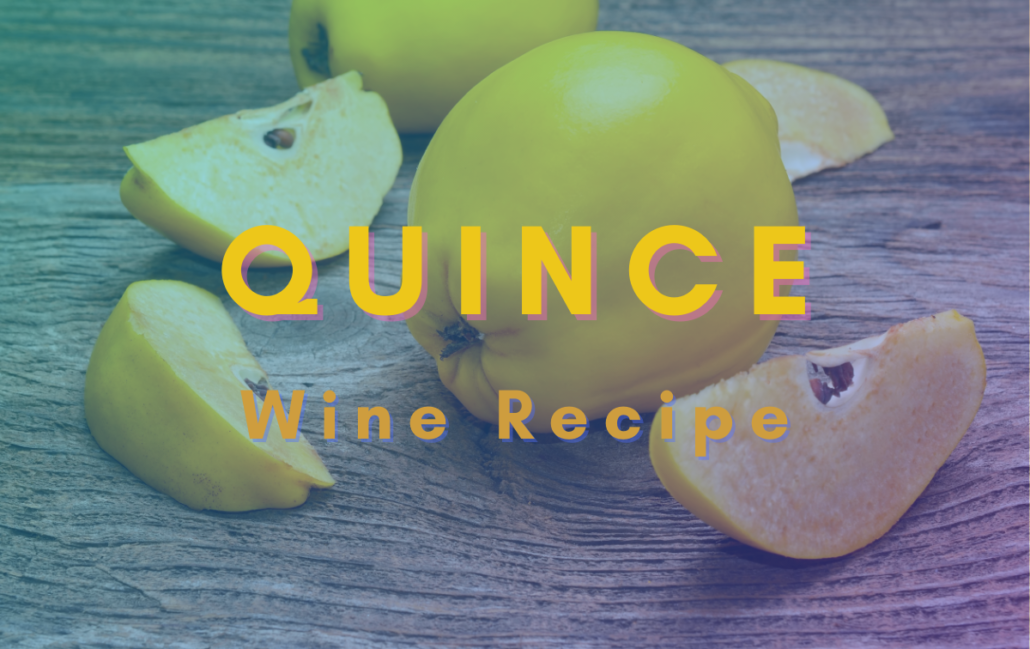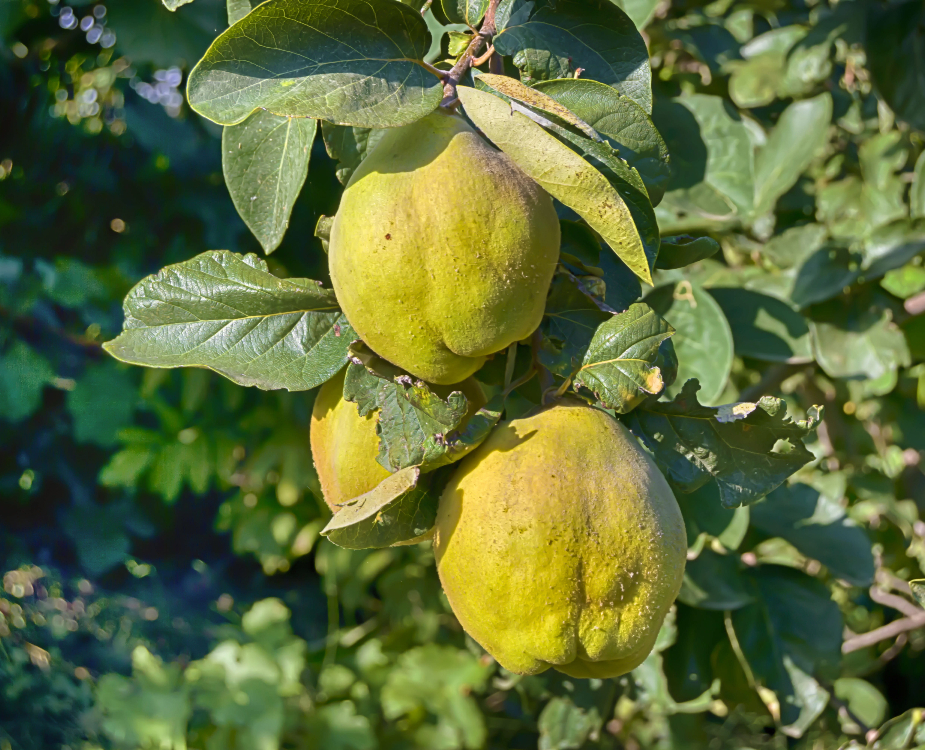Quince Wine Recipe – Bright, Refreshing White Wine

Quince is not a great looking fruit, looking like a lumpy apple, pear hybrid. It does, however, make a fantastic tasting wine. Quince is a hard, almost inedible fruit until they are cooked and they turn soft, sweet and taste like a cross between apple, pear and lemon.
If you have a quince tree then of course you will have a plentiful supply of quince in the autumn. If not then you will need to buy them.
Quinces tend to be quite seasonal and not commonly available in most supermarkets. The best place to find them are farmers markets and local grocers, my local greengrocers have them for very little money so making wine with them is a no-brainer.
Table of Contents
Quince In Wine
Uncooked quince is bitter, astringent and quite sour so today it tends to be quite overlooked and not that popular, hence why it is hard to find in supermarkets. That was not always the case, in 1275 Edward I ordered that quince trees be planted at the Tower of London and they are still commonly used to make jams and jellies in the UK today.
This quince wine recipe will make a dry, white wine and the flavour will be reminiscent of apple and pear with a little melon note.

Careful Quince Cooking
The quince will need cooking before we can make wine with them and this needs to be done carefully. Cooking quince will release pectin and this makes it a lot harder to clear the wine once it has finished fermenting.
A short 15 minutes of cooking and a teaspoon of pectolase will help ensure that the maximum amount of sugar and flavour can be extracted from the fruit without making the wine cloudy.
The fact that quince needs cooking lends itself to winemaking and preparing the quince exposes the flesh so the maximum amount of juice and flavour can be extracted.
Preparing The Quince For Making Wine
It can be a little bit laborious preparing quince for cooking and then making wine. With the help of a food processor you can speed things up but the fact is that all the fruit needs grating and you’ll need to grate around 20 quinces for a gallon batch of wine.
Quince has a central core just like an apple so you can either cut the quince flesh away from the core or you can grate the quince down to the core. Either way, we want to leave the core out of the wine.
You can leave the skin on the quince and grate this into the wine as it will add tannin and flavour.
Once all the fruit is grated you can cook the quince for 15 minutes as I will detail in the recipe.
What You’ll Need To Make Quince Wine – Makes 1 gallon / 4.5 litres
- Large Stock Pot
- Small Fermenting Bucket
- Demijohn
- Syphon
- Fine Straining Bag
- Potato Masher
- Airlock & Bung
Quince Wine Ingredients
- 2.2kg Quince (around 18-20 quince)
- 4.5 litres Water
- 1kg White sugar
- 1tsp Acid Blend
- 1/2 tsp Pectic Enzyme
- 1 tsp Yeast Nutrient
- 1 Campden Tablet
- 1 Sachet White Wine Yeast (Lalvin EC-1118 is a good choice)
To begin grate the quince with the skins but leave the core. Either remove the flesh from the core or grate as close as possible to the core. Put the grated quince in a pan and from the 4.5 litres of water use just enough to cover.
Cook the grated quince for 15 minutes and no longer. Longer cooking will release pectin and will prevent the wine from clearing. Place the straining bag into a sanitised fermenter and then pour the quince pulp and liquid into the straining bag.
In a large heavy-based pan combine half of the remaining water with the sugar and bring to a boil stirring to avoid scorching. After 5 minutes of simmering pour the boiling sugar solution over the quince in the fermenter.
Add the remaining cool water to bring the temperature down and then add the mixed acid, yeast nutrient and give everything a stir with a sanitised spoon. Cover and allow the must to cool to room temperature.
Once completely cool add the Campden tablet and then cover and leave to stand for 24 hours. Take a hydrometer reading at this point should you wish to note the ABV of the finished wine.
After 24 hours add the pectic enzyme, stir with a sanitised spoon and then sprinkle the yeast onto the surface of the must. There is no need to stir the yeast in, cover with lid and airlock and then allow fermentation to being.
Fermentation will start after around 24 – 72 hours and can be noted by bubbling of the airlock. For the first 7 days take a sanitised spoon and turn and stir the quince pulp which will likely float on the surface of the wine.
After 7 – 10 days fermentation will subside and activity will decrease. Lift out the bag of fruit pulp and allow it to drain without squeezing and extracting pectin. Cover the fermenter again and allow to settle for a further 3 days.
After 3 days it is time to rack the quince wine to a sanitised demijohn/carboy. Siphon the wine into the demijohn and then seal with a bung and airlock. The wine will continue to ferment and then condition in the demijohn before clearing after a few months.
Rack the wine at intervals whenever any sediment builds at the bottom of the demijohn. It is good to allow the wine to condition in the demijohn for up to 4 – 6 months which will allow the flavours to mellow and any byproducts of fermentation to even out.
After conditioning for several months and the wine has cleared you can proceed to bottle. You may wish to take a sample of the wine and back sweeten if you prefer and sweeter finished wine, instructions for doing this can be found here.
Once bottled set the quince wine aside for a few months before sampling.




Remaing water to make it cool.. how much literbto put again
The recipe is for 4.5 litres so top up the fermenter to this amount. Cheers